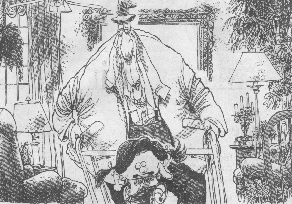Michael Fumento
Factual · Powerful · Original · Iconoclastic
Stem Cells Without Benefit of Embryos
January 01, 2001 · Michael Fumento · Washington Times · Stem Cells"Bloody rotten timing," as the Brits might say.
On July 24, researchers in Rostock, Germany, announced that two weeks before they had successfully transplanted stem cells into the heart of a man whom, they report, is now doing well.
The problem? The cells came from the man’s own marrow. No embryos were harmed in the making of this miracle.
What bloody awful news. It does nothing to help the full-court press to force the Bush administration to lift the funding ban on embryonic stem cell experimentation.
Which is why you’ve probably heard about the German experiment for the first and last time.
You see, over the last few months there has been a desperate effort to convince us that either (A), the ban covers all stem cell research, (B) the only type of stem cell is from embryos, or (C) if you have heard about non-embryonic cells, trust us, they’re not worth spit.
What the Ban-Lift Bunch has on its side is celebrities like Christopher Reeve and Nancy Reagan, nice people who either have or live with persons with severe physical problems. But they don’t exactly have medical backgrounds.

The Ban-Lift Bunch also has full media support.
Consider a recent issue of Newsweek, putting what it wants you to think is the entire argument right on the cover. "The Stem Cell Wars," declare the boldest words. "Embryo Research vs. Pro-Life Politics: There’s Hope for Alzheimer’s, Heart Disease, Parkinson’s and Diabetes. But Will Bush Cut Off the Money?"
Get it? It’s pro-life fanatics vs. science, pro-life fanatics versus the sick.
But actually it’s science, not abortion opponents, making the case for non-embryonic cells. Overwhelmingly, the incredible breakthroughs in stem cell research have involved NON-embryonic stem cells.
- A recent report in New Scientist described the successful use of stem cells from adult human hair follicles to create skin grafts.
- Two studies in Nature Medicine reported that nonembryonic stem cells injected into rodents can transform themselves naturally into neurons and insert themselves into the brain, giving hope to persons with Parkinson’s and other disorders. A third study found that injecting a chemical into damaged areas of rats’ brains stimulated stem cells to grow and differentiate into a massive number of normal, fully developed nerves. The cells were able to repair damage and restore mobility to the rodents.
- At least four rodent studies and one pig study have shown that nonembryonic stem cells can be injected into animals with damaged hearts and repair heart tissue.
- As reported in Molecular and Cellular Neuroscience, rats with degraded retinas were injected with nonembryonic stem cells that traveled to the site of damage, which then showed signs of making connections with the optic nerve and hence improve or even restore vision.
- Johns Hopkins School of Medicine researchers injected nonembryonic stem cells into the spinal fluid of paralyzed mice and rats, half of which partially or fully recovered.
- Cells from liposuctioned fat (North America’s most plentiful resource) have been transformed into bone, muscle, cartilage and mature fat cells, according to the journal Tissue Engineering.

"Next up: Everything we’ve decided you need to know about stem cells."
Time and again, scientists involved in non-embryonic stem cell work, including even some who say they support lifting the funding ban, have commented that one of the important results of their and others’ findings is that they would bypass the emotion-charged embryonic tissue debate. Among them:
- Dr. Donald Orlic of the National Genome Research Institute told NBC News in late March that, "We are currently finding that these adult stem cells can function as well, perhaps even better than, embryonic stem cells."
- Eric Olson, chair of the Department of Molecular Biology at the University of Texas Southwestern Medical Center say that almost "every other week there’s another interesting finding of adult cells turning into neurons or blood cells or heart muscle cells. Apparently our traditional views need to be re-evaluated."
- Markus C. Grompe, a professor of molecular medical genetics at Oregon Health Sciences University said of one study: "This would suggest that maybe you don’t need any type of fetal stem cell at all . . . that our adult bodies continue to have stem cells that can do this stuff."
One of the richest sources of cells that are not adult, but more importantly are nonembyronic, are umbilical cords and placentas from live births. Each year, more than 4 million umbilical cords are simply discarded. Connected end-to-end, they would stretch further than from New York to Houston.

"Mommy, Mommy, Grandpa is trying to get my stem cells."
Stem cells from newborns are not only available in unlimited amounts, there’s also reason to think they may be far more versatile than the other nonembryonic cells used in the aforementioned studies.
But it’s not just that embryonic cells are unneeded; pragmatism counsels that they should be shunned.
Much of the current fear over therapeutic human biotechnology comes from angst over embryonic stem cell research, expressed across the spectrum of the abortion debate. Rightly or wrongly, use of embryonic cells invokes visions of Dr. Josef Mengele and a spooky slippery slope toward playing around with human life.
Maintaining the ban on embryonic stem cell research while we continue to watch the fantastic results pour in from nonembryonic stem cell work will leap right over this moral chasm. This action will not just promote stem cell research, but prove invaluable to all future therapeutic genetic research and the vast promise it holds.
